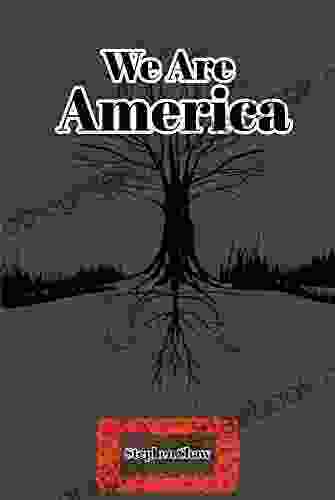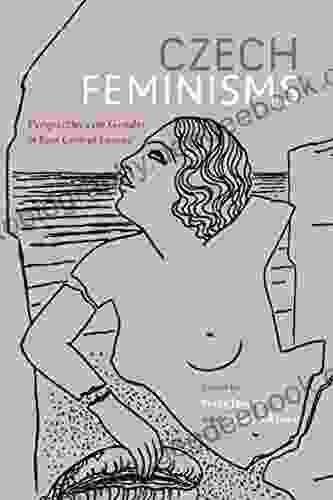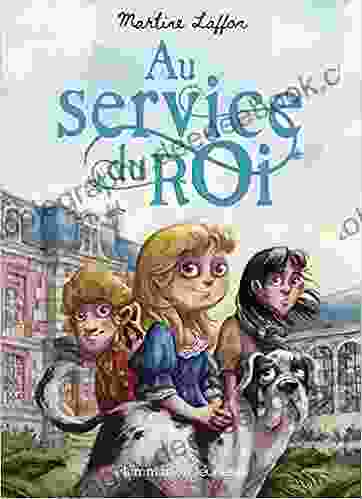Perspectives on Gender in East Central Europe: A Complex and Changing Landscape

Gender is a complex and multifaceted concept that has been shaped by a variety of historical, social, and cultural factors. In East Central Europe, the perspectives on gender have been particularly complex and evolving, due to the region's unique history and political experiences.
5 out of 5
| Language | : | English |
| File size | : | 5485 KB |
| Text-to-Speech | : | Enabled |
| Screen Reader | : | Supported |
| Enhanced typesetting | : | Enabled |
| Print length | : | 334 pages |
| Lending | : | Enabled |
During the communist era, gender was often seen as a binary construct, with men and women occupying distinct and separate roles. Men were expected to be strong, stoic, and dominant, while women were expected to be nurturing, submissive, and domestic. However, the fall of communism in 1989 led to a period of rapid social and economic change, which also brought about a shift in attitudes towards gender.
In the post-communist era, there has been a growing movement for gender equality in East Central Europe. This movement has been influenced by a variety of factors, including the rise of feminism, the increasing participation of women in the workforce, and the growing awareness of gender-based violence.
Despite the progress that has been made, gender inequality remains a significant problem in East Central Europe. Women are still underrepresented in leadership positions, and they continue to earn less than men for the same work. Gender-based violence is also a major problem, with women being disproportionately affected by sexual harassment, domestic violence, and other forms of violence.
The perspectives on gender in East Central Europe are complex and evolving. The region has a long history of gender inequality, but there is also a growing movement for gender equality. The future of gender in East Central Europe is uncertain, but it is clear that the region is at a crossroads. The choices that are made in the coming years will have a significant impact on the lives of women and men in the region.
Historical Perspectives on Gender in East Central Europe
The historical perspectives on gender in East Central Europe are complex and varied. The region has been home to a variety of cultures and civilizations over the centuries, and each of these has left its own mark on the region's gender norms and expectations.
In the pre-Christian era, the region was inhabited by a variety of pagan tribes. These tribes had a range of gender roles and norms, with some tribes being more egalitarian than others. However, with the arrival of Christianity in the 9th and 10th centuries, gender roles became more rigid. The Church taught that men were superior to women, and that women's role was to be subservient to men.
During the Middle Ages, gender roles in East Central Europe were largely determined by the feudal system. Men were the landowners and rulers, while women were responsible for managing the household and raising the children. This division of labor was reinforced by the Church, which taught that women were naturally inferior to men.
The Renaissance and Reformation brought about some changes in gender roles in East Central Europe. With the rise of humanism, there was a growing emphasis on the equality of all people, including women. However, these changes were largely confined to the upper classes, and the majority of women continued to live in poverty and inequality.
The 19th century saw the rise of nationalism in East Central Europe. Nationalists argued that women had a vital role to play in the struggle for national independence. However, once independence was achieved, women were largely relegated to the domestic sphere.
The 20th century was a period of great upheaval in East Central Europe. The region was devastated by two World Wars, and it was also subject to communist rule for much of the century. During the communist era, gender roles were largely defined by the state. Women were expected to work outside the home, but they were also expected to fulfill their traditional roles as wives and mothers.
Social and Cultural Perspectives on Gender in East Central Europe
The social and cultural perspectives on gender in East Central Europe are complex and varied. The region is home to a variety of ethnic groups and cultures, and each of these has its own unique set of gender norms and expectations.
In general, gender roles in East Central Europe are more traditional than in Western Europe. Women are still expected to be responsible for the majority of childcare and housework, even if they are employed outside the home. Men are still expected to be the breadwinners and to be emotionally stoic.
However, there is also a growing movement for gender equality in East Central Europe. This movement is led by women's organizations and feminist activists, and it is working to change attitudes towards gender and to promote the rights of women.
The media plays a significant role in shaping gender roles and expectations in East Central Europe. In many countries in the region, the media portrays women as being primarily responsible for the home and family. This can reinforce traditional gender roles and make it difficult for women to break free from these expectations.
Education is another important factor that influences gender roles and expectations. In East Central Europe, girls and boys are often socialized into different roles from a young age. Girls are taught to be quiet and obedient, while boys are taught to be assertive and independent. This can lead to girls and boys having different educational experiences and career aspirations.
The Future of Gender in East Central Europe
The future of gender in East Central Europe is uncertain. The region is facing a number of challenges, including economic inequality, political instability, and rising populism. These challenges could lead to a backlash against gender equality and a return to more traditional gender roles.
However, there is also hope for the future of gender in East Central Europe. The region has a long history of feminist activism, and there is a growing movement for gender equality. This movement is working to change attitudes towards gender and to promote the rights of women.
The future of gender in East Central Europe will be determined by the choices that are made in the coming years. If the region is able to overcome its challenges and build a more just and equitable society, then gender equality will be a key part of that future.
The perspectives on gender in East Central Europe are complex and evolving. The region has a long history of gender inequality, but there is also a growing movement for gender equality. The future of gender in East Central Europe is uncertain, but it is clear that the region is at a crossroads. The choices that are made in the coming years will have a significant impact on the lives of women and men in the region.
5 out of 5
| Language | : | English |
| File size | : | 5485 KB |
| Text-to-Speech | : | Enabled |
| Screen Reader | : | Supported |
| Enhanced typesetting | : | Enabled |
| Print length | : | 334 pages |
| Lending | : | Enabled |
Do you want to contribute by writing guest posts on this blog?
Please contact us and send us a resume of previous articles that you have written.
 Page
Page Chapter
Chapter Text
Text Paperback
Paperback Newspaper
Newspaper Bookmark
Bookmark Shelf
Shelf Foreword
Foreword Preface
Preface Annotation
Annotation Footnote
Footnote Manuscript
Manuscript Scroll
Scroll Codex
Codex Classics
Classics Library card
Library card Autobiography
Autobiography Dictionary
Dictionary Thesaurus
Thesaurus Character
Character Librarian
Librarian Catalog
Catalog Card Catalog
Card Catalog Borrowing
Borrowing Stacks
Stacks Periodicals
Periodicals Lending
Lending Academic
Academic Journals
Journals Reading Room
Reading Room Rare Books
Rare Books Interlibrary
Interlibrary Study Group
Study Group Thesis
Thesis Storytelling
Storytelling Awards
Awards Reading List
Reading List Book Club
Book Club Theory
Theory Textbooks
Textbooks Jasmin Li
Jasmin Li Liz Wilkey
Liz Wilkey Shalini Shankar
Shalini Shankar Molly Knight
Molly Knight Daniel Levin
Daniel Levin Linda Press Wulf
Linda Press Wulf Paradise
Paradise Mitch Friedman
Mitch Friedman Shauna E Black
Shauna E Black Alice Rains Trulock
Alice Rains Trulock Peter Skagen
Peter Skagen Amber Harper
Amber Harper Rob Shumaker
Rob Shumaker Alice M Sapienza
Alice M Sapienza Terry M Barnard
Terry M Barnard Nathaniel Gold
Nathaniel Gold Eiko Maruko Siniawer
Eiko Maruko Siniawer Je Czaja
Je Czaja Ian Stables
Ian Stables Jerry Herman
Jerry Herman
Light bulbAdvertise smarter! Our strategic ad space ensures maximum exposure. Reserve your spot today!

 Corbin PowellThe Ultimate Branding Primer Workbook: A Comprehensive Guide to Building a...
Corbin PowellThe Ultimate Branding Primer Workbook: A Comprehensive Guide to Building a...
 Junichiro TanizakiWe Are America by Susan Mallery: A Profound and Heartwarming Exploration of...
Junichiro TanizakiWe Are America by Susan Mallery: A Profound and Heartwarming Exploration of...
 Yasunari KawabataThe Raw Facts Of Feline Feeding: Unraveling the Controversy and Ensuring Your...
Yasunari KawabataThe Raw Facts Of Feline Feeding: Unraveling the Controversy and Ensuring Your... Edgar CoxFollow ·4.9k
Edgar CoxFollow ·4.9k Anton FosterFollow ·15.2k
Anton FosterFollow ·15.2k DeShawn PowellFollow ·19.4k
DeShawn PowellFollow ·19.4k Aldous HuxleyFollow ·6.8k
Aldous HuxleyFollow ·6.8k Chandler WardFollow ·13.5k
Chandler WardFollow ·13.5k Christian CarterFollow ·9.5k
Christian CarterFollow ·9.5k David MitchellFollow ·17.3k
David MitchellFollow ·17.3k Jorge Luis BorgesFollow ·10.7k
Jorge Luis BorgesFollow ·10.7k

 Fletcher Mitchell
Fletcher MitchellEducation And Peace Montessori 10: Where Learning...
A Symphony of Learning and Well-being Amidst...

 Glen Powell
Glen PowellUnveiling the Wonders of Language and Literacy...
Language and literacy...

 Rod Ward
Rod WardThe Portable Benjamin Franklin: A Timeless Collection of...
In the vast tapestry of American history,...

 Kelly Blair
Kelly BlairDemocracy Versus Authoritarianism in the Post-Pandemic...
The COVID-19...

 Colin Richardson
Colin RichardsonGet Inspired To Shoot Over 130 Poses
Are you looking for...

 Jared Nelson
Jared NelsonEmbark on a Shadowy Journey: The Forbidden Wilds and...
Prologue: A Realm Enshrouded in Darkness As...
5 out of 5
| Language | : | English |
| File size | : | 5485 KB |
| Text-to-Speech | : | Enabled |
| Screen Reader | : | Supported |
| Enhanced typesetting | : | Enabled |
| Print length | : | 334 pages |
| Lending | : | Enabled |






